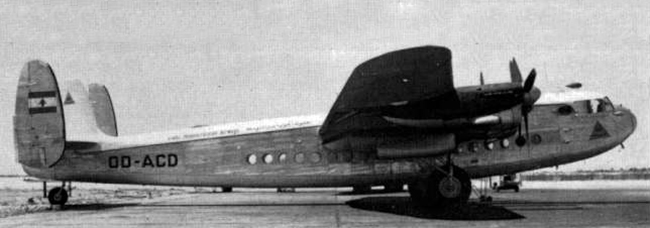Crash of an Avro 685 York C.1 in Tehran
Date & Time:
May 27, 1960
Registration:
OD-ACD
Survivors:
Yes
Schedule:
Tehran – Beirut
MSN:
MW138
YOM:
1944
Crew on board:
3
Crew fatalities:
Pax on board:
0
Pax fatalities:
Other fatalities:
Total fatalities:
0
Circumstances:
Crashed on takeoff at Mehrabad Airport for unknown reason. The aircraft was damaged beyond repair and all three crew members were injured.


